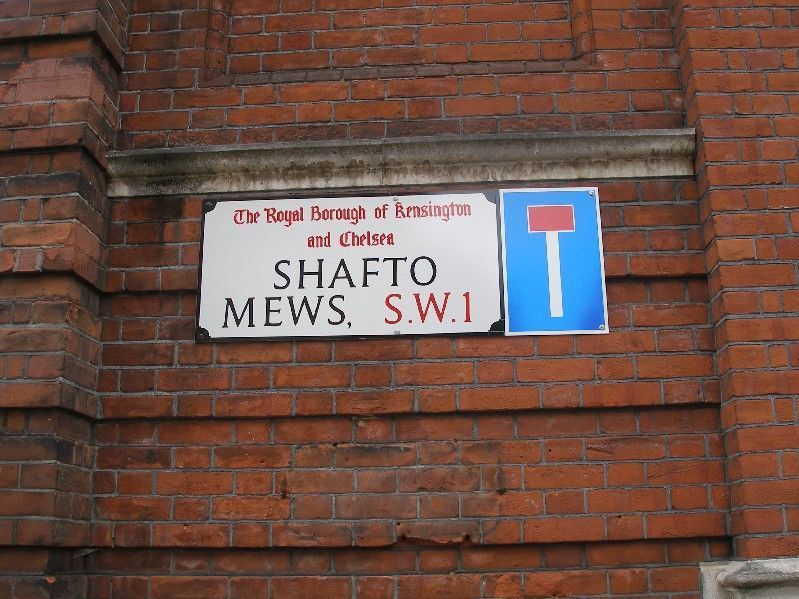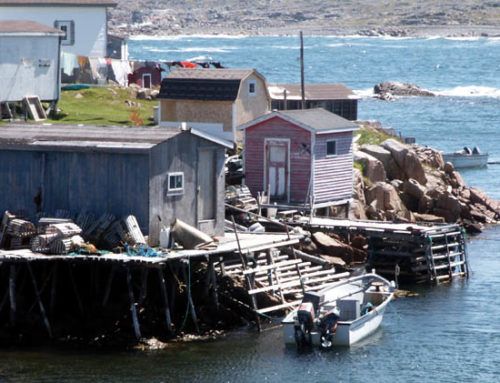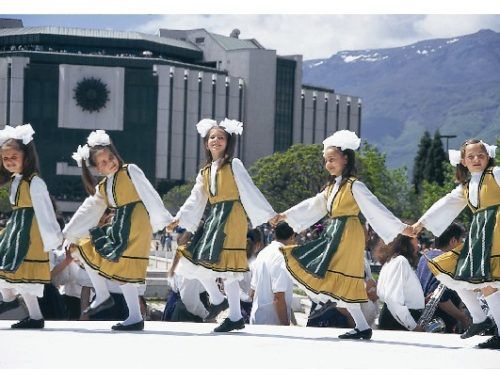The Mews of London
Hidden in alleys and culs-de-sac, the former stables of London now house trendy homes, pubs, and restaurants and preserve some of the city’s last vestiges of community spirit.

In September 1998, I returned to London for a visit dedicated to researching mews. The funeral of Princess Diana had just taken place and flowers were everywhere. Time being limited, I contacted a professional agency that would help me navigate London and see as many mews as possible. So on a crisp autumn morning, Keith Stables and Monica Barrington of Uptown Reservations met me at Holland Park metro, set in the heart of London. Just a few blocks away was Hippodrome Mews, the site of Kiln House, formerly a working kiln but now operating as a quaint bed-and-breakfast establishment.
Parking in this narrow mews was almost impossible, but we finally double-parked just long enough for a quick look inside the building. The most dramatic feature of the neatly appointed house was the dining room, which the new owner had tucked into the space occupied by the former kiln.
It became clear, as the day went by, that each mews and indeed almost every house within each mews has its own unique character, history, and story to tell. I chuckled at the irony of the historical marker for Kiln House, which noted that the original nineteenth-century kiln had been built “amid some of the poorest housing conditions in London.” Today the mews, while not the most expensive, was anything but poor.
We spent the rest of the morning touring several mews properties that offered overnight accommodations for the traveler. Most were in areas where it’s still safe to walk at night and, compared to London hotels, were very economical. Though I was staying with a friend on this trip, I wouldn’t hesitate to book a mews B&B. All of the hostesses were friendly and professed to be experts on shopping, theater, and transportation around town.
The last two stops of the morning were Queen’s Gate Mews and Elvaston Mews, both in trendy Kensington. Queen’s Gate Mews is home to Coy’s of Kensington, specialists in fine historic automobiles. Ironically, it seemed a perfect fit. Here, housed in a property initially built for horses and their carriages, is a showroom packed with horseless carriages–vintage Aston Martins, Bentleys, Jaguars, and Rolls-Royces.
Across the street from Coy’s is the first gas station in London to pump gasoline, and kitty-corner is the Queens Arms, a mews pub with a traditional horseshoe bar. Many Royal Albert Hall concertgoers make this quaint pub their meeting point, especially for the world-famous promenade season, which climaxes with the last night at the Proms in mid-September.
In Elvaston Mews, we stopped at Capital Carriages, which rents horse-drawn carriages for private weddings and tours of London. Philip York, head coachman and stable manager, happily pulled out a carriage for us to view, and Barrington hopped in for a mock ride. During our visit, York explained that their carriages and dapple grays are often enlisted for period film and television work such as the 1996 refilming of Jane Austen’s Pride and Prejudice, in which he served as a coachman driving the Gardener and Bennet families.
Lunch with Lurot

Lurot was a wealth of insider information on London mews but couldn’t show me his more upscale properties, since I was not a serious buyer and most of his clients do not seek publicity, preferring to remain anonymous. So after lunch he escorted me through some of the nearby mews streets for a good look at some exteriors and renovations in progress.
Just a five-minute walk away was Bathurst Mews, with a street wide enough to do a three-point turn. Colorful window boxes replaced front gardens, and, as if to illustrate Lurot’s contention that mews are the only place in London where everybody knows his neighbors, some of the natives had pulled chairs out into the afternoon sun to chat and watch passersby. Now I understand why some maintain that the mews preserve the last vestiges of community spirit in central London.
At the end of the mews was Hyde Park Riding Stables, which gives riding lessons and rides through nearby Hyde Park. It is London’s oldest original riding stables and the only one open year round for riding in the park. Unfortunately I hadn’t made time for a ride and had to leave for an appointment at the Royal Mews near Victoria Station.
Although I was just two minutes late, Dickie Arbiter, the director of media affairs for the Royal Mews, Buckingham Palace, and Windsor Castle, was decidedly not amused. I had a feeling that he had made a special trip and didn’t really want to be stuck in London on this fine day. However, he graciously, though with customary English reserve, led me on a tour of the mews that are grouped around a quadrangle entered from Buckingham Palace Road through a Doric archway.
Several impressive coaches were lined up on the east side of the court. A close inspection revealed the detailed artistry of their handmade construction. Among them were those used for coronations, the queen’s birthday parade, the Royal Ascot, as well as the opening of Parliament and state visits to Britain. The queen’s gold state coach, reserved for very special occasions like the Silver Jubilee, was on display in a nearby exhibition hall, where it could be fully protected from the elements.
After a quick tour of the stables, I was left on my own to view the various exhibitions dedicated to British royalty and their horses. Among my favorites were photos of Queen Elizabeth riding with various visiting dignitaries, including Ronald Reagan, and candid shots of the royal family at play with their mounts.
The rest of the afternoon I spent meandering the streets of London with a hired driver trying to find specific mews I had read about. This turned out to be no small feat. Trapped more than once on roundabouts and one-way streets, even this experienced driver never found Ebury Mews, which is supposedly somewhere in Belgravia and home to a pottery shop, one of the few bona fide mews businesses.
But we did locate Hesper, Henniker, and Spear Mews. All three had received awards for excellence in gardening from the Chelsea Gardeners’ Guild. Each year the guild honors the best street, square, mews, and individual garden, down to the best window box in a three-mile radius from Old Chelsea Town Hall. Hesper and Henniker received a joint award in 1996, Spear Mews in 1997. (In addition to beauty, Spear Mews’ dwellers also have the convenience of a car-repair shop in the mews.)
A Mews Pub Birthday
The next day was my birthday, so Stables and Barrington invited me to lunch at the Ennismore Arms, a mews pub in, you guessed it, Ennismore Mews. (Sadly, I discovered in June 2007 that the pub was bought and turned into a home.) Riding the train into town that morning, I studied some historical writings about mews. At the end of the Industrial Revolution, industrialists reveling in Victorian prosperity funneled their money into building luxurious London homes. This was before the advent of the motorcar, so all came equipped with adjoining stables well-hidden in the rear, where the horses were kept and the grooms lived.
After the advent of the automobile, the mews quickly became obsolete. Some were turned into garages, but many were abandoned and had a stigma attached to them for having once housed the less fortunate in society. The gentrification and glorification of the mews started in the 1950s and ’60s, when many were acquired and remodeled by struggling actors and models, or by musicians like the not-so-struggling George Harrison. Now peaceful refuges from busy city life, they are no longer the lodging for the down-and-out or the up-and-coming. You need to have already arrived and have some disposable cash for a hefty down payment in order to be a mews dweller.
This day I exited the subway at Knightsbridge near Harrods. Even though I’m not a Princess Diana groupie, I couldn’t help but get caught up in the activities in front of London’s premier department store. Since it was just days after Diana’s funeral, literally thousands of flowers and tributes lined Harrods exterior walls. Hundreds of people were milling about, taking photos and signing the thick commemorative books for Diana and Dodi. I lingered to sign one of the books myself and then left to find the mews for lunch.
Although Ennismore Mews is only a few blocks from Harrods, the directions Stables gave me, which included “look for a hole in the wall, which is a shortcut,” got me horribly lost. After thirty minutes of wandering, all was well when a friendly resident of trendy Cheval Place led me to a gate in the wall–the desired shortcut. Another minute walk, and I was there.
So close to Knightsbridge, Ennismore Mews is one of the more expensive mews but still very typical. Here in the very heart of London is a sanctuary of charming two-and three-story row homes. Lacking front gardens, an infusion of color comes from window boxes on both stories, large flowerpots, and the occasional brightly colored door. Many garages have been converted into living space. At the closed end of the mews, the back of a large, four-story townhouse towers above the homes below, one of which is an upscale B&B listed with Uptown. At the other end of the mews sits the pub.
Stables and Barrington had already secured the table by the fireplace and handed me a birthday card as I sat down. The pub had a paneled-wood interior and served good beer and excellent food. It was populated with professionals rather than the working class I expected. I eavesdropped on a television crew while friends of Stables and Barrington, an American expatriate couple who live in London, sat with us for a minute. Other mews pubs in London, like Belgravia’s Grouse and Claret and the Star, are also gathering places and watering holes for professionals and residents.
No one would claim to know the exact number of mews in the city, but Lurot lists 720 in Victorian central London. The number of actual mews houses is also a guess, but 20,000 is a conservative estimate. One thing is for sure–one trip will never exhaust a fascination with them. Any good London map lists them, and some good guidebooks discuss a few.
My initial idea had been to see if it was possible to spend the whole of one’s vacation immersed in a mews experience. I discovered it was not. While mews accommodations and eating establishments in London and the close environs abound, one must really turn to Harrods, the museums, and other venues for shopping to have a rounded experience.
So I haven’t finished my inspection. Someday I will return to London to look for some of the more interestingly named mews, like Adam and Eve Mews and Old Stable Mews. But I’ll have an impossible time finding the fictional Which have we forgotten Mews, one that Lurot devilishly inserted at the end of a published list of London mews as a joke. Those that are not imaginary, however, must have their own stories to tell. So when I return, I’ll be on the lookout for their tales and for the unexpected mews that will fill me with awe and envy.
For more information, contact:
Monica Barrington/Keith Stables
Uptown Reservations
8 Kelso Place
Kensington, London W8 5QD
England
Telephone: 44 (0)20 7937 2001
Fax: 44 (0)20 7937 6660
www.uptownres.co.uk
Email:inquiries@uptownres.co.uk
The Royal Mews
Buckingham Palace Rd.
London, ENGLAND


